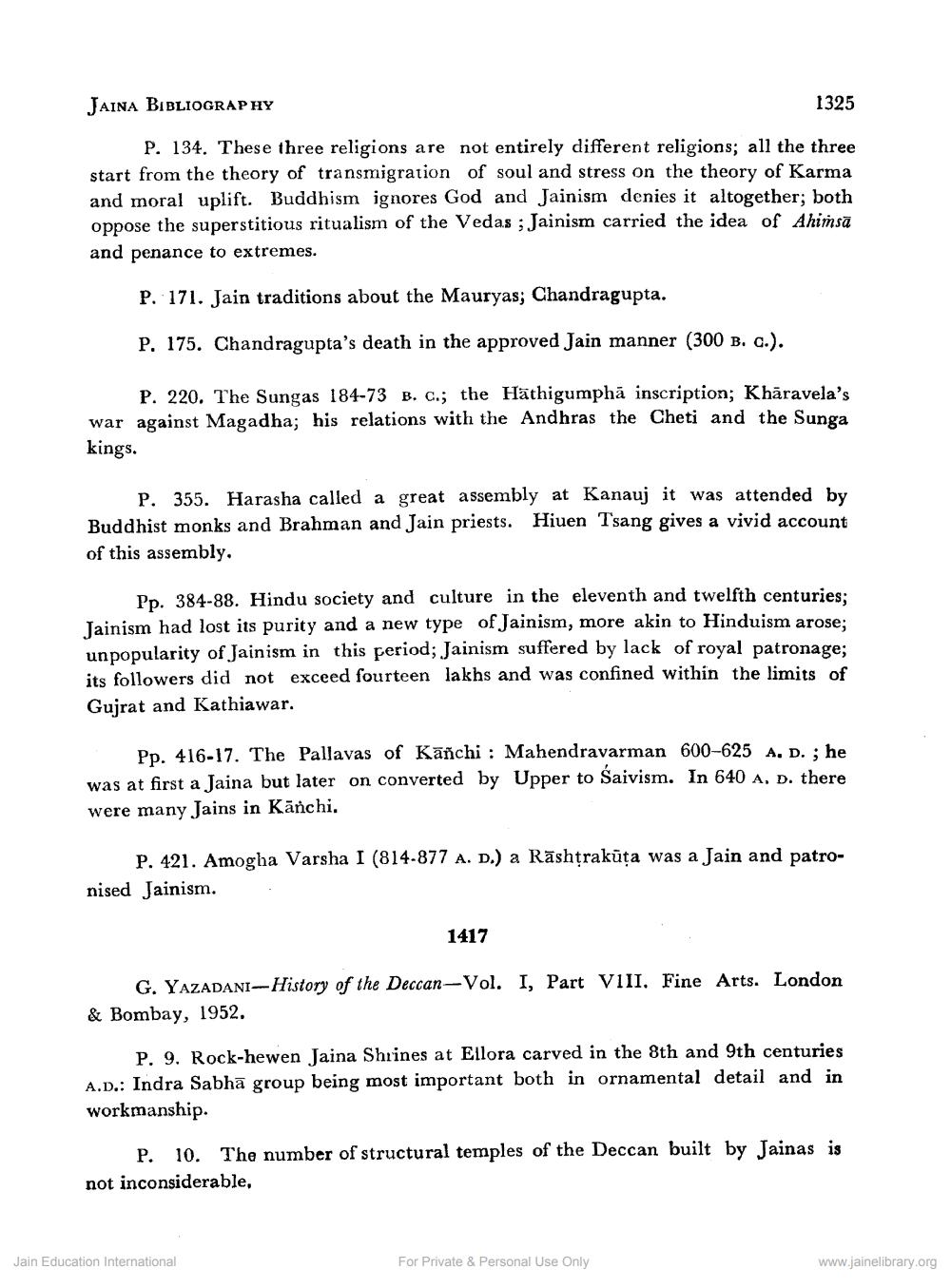________________
JAINA BIBLIOGRAPHY
1325
P. 134. These three religions are not entirely different religions; all the three start from the theory of transmigration of soul and stress on the theory of Karma and moral uplift. Buddhism ignores God and Jainism denies it altogether; both oppose the superstitious ritualism of the Vedas; Jainism carried the idea of Ahimsā and penance to extremes.
P. 171. Jain traditions about the Mauryas; Chandragupta.
P. 175. Chandragupta's death in the approved Jain manner (300 B. C.).
P. 220. The Sungas 184-73 B. C.; the Häthigumphā inscription; Khāravela's war against Magadha; his relations with the Andhras the Cheti and the Sunga kings.
P. 355. Harasha called a great assembly at Kanauj it was attended by Buddhist monks and Brahman and Jain priests. Hiuen Tsang gives a vivid account of this assembly,
Pp. 384-88. Hindu society and culture in the eleventh and twelfth centuries; Jainism had lost its purity and a new type of Jainism, more akin to Hinduism arose; unpopularity of Jainism in this period; Jainism suffered by lack of royal patronage; its followers did not exceed fourteen lakhs and was confined within the limits of Gujrat and Kathiawar.
Pp. 416-17. The Pallavas of Kāñchi : Mahendravarman 600-625 A, D.; he was at first a Jaina but later on converted by Upper to Saivism. In 640 A, D. there were many Jains in Kānchi.
P. 421. Amogha Varsha I (814-877 A. D.) a Rāshțrakūta was a Jain and patronised Jainism.
1417
G. YAZADANI--- History of the Deccan-Vol. I, Part VIII. Fine Arts. London & Bombay, 1952.
P. 9. Rock-hewen Jaina Shrines at Ellora carved in the 8th and 9th centuries A.D.: Indra Sabhā group being most important both in ornamental detail and in workmanship.
P. 10. The number of structural temples of the Deccan built by Jainas is not inconsiderable,
Jain Education International
For Private & Personal Use Only
www.jainelibrary.org




